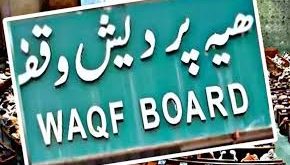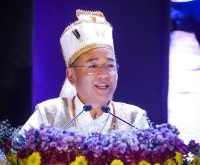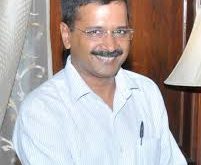Rewrite the content below, making adjustments to the beginning and end of each paragraph, and send the content directly below:
For any region to experience economic and social growth, connectivity infrastructure remains essential. The construction of Maharashtra’s longest expressway reflected the same vision.
The 701-kilometer Samruddhi Expressway, formerly known as the “Hindu Hrudaysamrat Balasaheb Thackeray Maharashtra Samruddhi Mahamarg,” connects Mumbai and Nagpur.
Few people are aware that Dy’s goals laid the groundwork for the project, which is now in its final stages. CM Devendra Fadnavis, who first came up with the idea while he was Nagpur Mayor. Fadnavis and his administration have been integral to the project’s success ever since.
His initial vision was to improve Nagpur’s infrastructure and to identify a direct connection to Mumbai, the state’s economic powerhouse. It would be difficult to start Nagpur’s economic engines without a direct connection to the capital.
“This expressway will create a new growth engine for the state by connecting rural areas to urban centers,” he had stated. This will guarantee that Vidarbha’s potential is fully realized. “The expressway is intended to be more than just a road; it is also an infrastructure project that will alter the socioeconomic landscape, particularly in the Vidarbha region, which is underserved.
State’s Longest Expressway
In 2015, it was announced that the Samruddhi Expressway project would be executed by the Maharashtra State Road Development Corporation (MSRDC).
Preparation of the project report, acquisition, implementation, and funding of the land, in addition to other formalities necessary to support the greenfield alignment, were all established within the following four years.
In 2019, construction officially began, resulting in a record-breaking completion date. On December 11, 2022, the Samruddhi Expressway’s phased opening began, connecting Nagpur to Shirdi over a 520-kilometer stretch.
The first phase significantly improved central Maharashtra’s connectivity by reducing travel times between these two cities.
The subsequent stage, 80 km-stretch among Shirdi and Igatpuri, opened on in May, 2023, further expanding the course towards Mumbai.
The final section of the 701-kilometer expressway connects Igatpuri to Mumbai. When fully operational, the expressway will reduce travel time between Nagpur and Mumbai to approximately eight hours.
The enormous undertaking spans a total of six tunnels, the longest of which is the 7.7-kilometer twin tunnel that connects Kasara Ghat and Igatpuri and is the longest highway tunnel in Maharashtra.
There are 35 wildlife focus areas and three wildlife sanctuaries along the corridor, as well as a 310-meter-long high bridge over the Wardha River.
Special measures like undercrossings, overpasses, and high box culverts were developed to protect wildlife and make it easier for animals to move around to avoid becoming roadkill.
Opening Up the Unconnected Regions
The so-called “golden triangle” of Mumbai, Pune, and Nashik, which, according to some estimates, accounts for approximately 60% of the state’s Gross State Domestic Product (GSDP), is largely responsible for the economic engine of Maharashtra.
In addition, Sangli, Satara, and Kolhapur are emerging industrial hubs.
However, a lack of connectivity has largely prevented development in the eastern part of Maharashtra.
This was specifically changed by the Samruddhi Expressway, which aimed to provide the state with new opportunities.
An economic corridor that would encourage regional development and growth was the goal of this project. The road connects 14 additional districts indirectly and covers ten important districts across its entire length across the state.
The alignment is designed to connect economic centers like Mumbai’s Jawahar Lal Nehru Port (JNPT), the country’s largest container port, and Navi Mumbai’s upcoming new airport.
The road has 24 interchanges that connect it to various economic and industrial hubs.
Around interchanges, highways typically develop economic hotspots over time. This expressway, on the other hand, takes a more methodical approach by directly incorporating a township development plan into the design of the project, maximizing economic impact from the beginning.
The creation of 18 townships at intervals of 30-40 kilometers along the route is a central goal.
To support the development of a diverse community, these townships will provide essential amenities like hospitals, ITIs, skill centers, technical and higher education institutions, schools, playgrounds, parks, and sports complexes.
Fadnavis’s Key Initiatives for the Expressway Project
According to reports, Maharashtra was the first Indian state to construct a greenfield expressway. This occurred during the development of the Mumbai-Pune Expressway, which became operational in 2002.
However, progress slowed down following this effort, putting a long halt to the construction of new expressways in Maharashtra.
In order to bring his vision to life, Fadnavis took decisive actions. He kept stressing the need for better infrastructure in Vidarbha, which has historically been behind the western parts of Maharashtra in terms of development.
The BJP-Shiv Sena coalition government announced and approved the greenfield expressway’s construction in 2015.
He fought for the project at all levels of government, got necessary approvals, cut down on bureaucratic red tape, and made important decisions for the project’s progress.
Land Acquisition
Fadnavis’ hands-on approach sped up the process of acquiring land, which is still a major obstacle for such large-scale projects.
Negotiating with landowners and addressing issues of displacement made the 701-kilometer acquisition of land, which affected multiple districts and numerous villages, a significant obstacle.
Additionally, environmental clearances were a source of concern, particularly in ecologically fragile regions where stringent regulations and public opposition slowed progress.
Fadnavis implemented a structured land acquisition policy with an emphasis on fair compensation or rehabilitation to address these issues.
The emphasis was placed on open communication with affected communities, which assisted in gaining public support and expediting procedures.
In prior projects, even minor issues, for example, arguments about little bundles of land, frequently prompted significant deferrals or complete stops. A single land conflict could derail entire projects and drive up costs and timelines.
The infrastructure “war room,” which was first set up in 2015 by then-CM Fadnavis, also helped the acquisition process by working together well.
War Room Strategy
The “war room” further aided in the acceleration of this project, which completed all necessary steps following the completion of the land acquisition procedure.
This centralized approach helped speed up inter-agency coordination, which typically encounters difficulties in traditional departmental decision-making.
Historically, these differences frequently resulted in coordination issues, delays, and higher costs because each involved agency had its own distinct work culture and decision-making style.
By implementing a unified strategy, the war room was able to overcome these obstacles, allowing agencies to execute more cohesively and avoiding delays and price increases.
Fadnavis used the balance sheets of five state public agencies to strategically leverage to fund the Mumbai-Nagpur Expressway: the Mumbai Metropolitan Region Development Authority (MMRDA), the City and Industrial Development Corporation (CIDCO), the Maharashtra Housing and Area Development Authority (MHADA), and the Slum Rehabilitation Authority (SRA).
5,000 crores of rupees were raised through this procedure
In addition, the Mumbai-Pune Expressway’s and the older Mumbai-Pune Highway’s toll collection rights were securitized, bringing in an additional Rs 9,000 crore to support the expressway project.
For the purpose of acquiring land for the proposed expressway, the funds obtained through this securitization were crucial.
MSRDC was in charge of funding costs associated with land acquisition, and loans cover the entire construction cost. The expressway’s toll revenue will be used to repay the loan used to pay for the construction.
Modern Technology
Fadnavis advocated for the expressway’s design and operation to incorporate cutting-edge technology, such as intelligent traffic management systems and environmentally sustainable practices.
The goal of these advancements is to shorten travel times and increase safety.
He made sure that the project was closely watched and that stakeholders and the general public were kept informed of its progress on a regular basis.
The project’s success was crucially dependent on maintaining public support and interest through transparency.
MSRDC At The Forefront
MSRDC carried out the planning, which included selecting a route, purchasing land, and getting environmental approvals. All of this was done while maintaining openness and involving the communities in the area.
The government provided incentives for businesses to establish themselves along the expressway in an effort to attract investment in a variety of industries, including agriculture, logistics, and manufacturing, since the development’s broader goal was to create new townships and industrial zones along the route.
“The project was not just intended to connect two places; it was also intended to serve as an economic corridor with 18 townships at key intersections,” declared Radheshyam Mopalwar, the former MSRDC MD and VC.
The townships construction is scheduled to begin now that the majority of the expressway is operational.
The Maharashtra government has proposed additional connectors—access-controlled expressways—to connect major districts in the state to the Samruddhi Mahamarg, continuing this trend.
Jalna-Nanded expressway
The 179.85-kilometer Jalna-Nanded expressway and the 53-kilometer elevated, six-lane Pune to Shirur Road are two new connections that are making progress as the project nears completion.
The Jalna-Nanded greenfield expressway will provide Nanded, Hingoli, Parbhani, and Jalna districts with direct and expedited connectivity to Mumbai and the Jawaharlal Nehru Port Trust (JNPT).
With a 100-meter right-of-way, this six-lane expressway will have a design speed of 120 kilometers per hour. The provision of a 20-meter space for the construction of a high-speed rail corridor is a distinctive feature of the expressway.
The nearly 180-kilometer expressway connects Jalna on Samruddhi Mahamarg with the Nanded-Deglur-Telangana NH 161 and goes through Parbhani and Nanded districts.
Pune-Shirur Road
The Maharashtra state government has also approved connecting the 53-kilometer elevated, six-lane Pune-Shirur Road via Chhatrapati Sambhajinagar with the Samruddhi Expressway.
The expressway, which will begin at Kesnand (Wagholi) and Lonikand on the Pune Bypass and improve connectivity throughout important regions, will be a crucial link.
The project will be managed by the Maharashtra State Infrastructure Development Corporation (MSIDC) and the state’s public works department (PWD).
The development, which is expected to cost Rs 9,565 crore, will include Rs 7,515 crore for the Pune-Shirur Road and Rs 2,050 crore for improving the Chhatrapati Sambhajinagar Road by using the Ahmednagar Bypass.
The new expressway will provide multiple entry and exit points to cities such as Shirur, Ahmednagar, Nevasa, and Chhatrapati Sambhajinagar, according to government officials.
These expressways, which can connect urban and rural areas, will create a seamless network of modern roads when they are finished. They will make traveling quick and easy, which will help Maharashtra’s economy grow.
Under Devendra Fadnavis’ leadership, the project evolved from a concept into a transformative initiative that is set to reshape the state’s economic landscape. The project’s success is a reflection of his vision and determination.
 Newspatrolling.com News cum Content Syndication Portal Online
Newspatrolling.com News cum Content Syndication Portal Online







